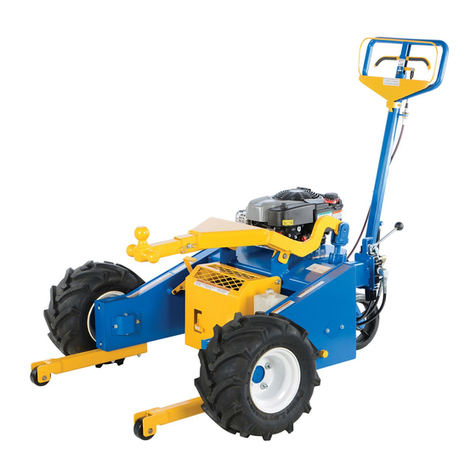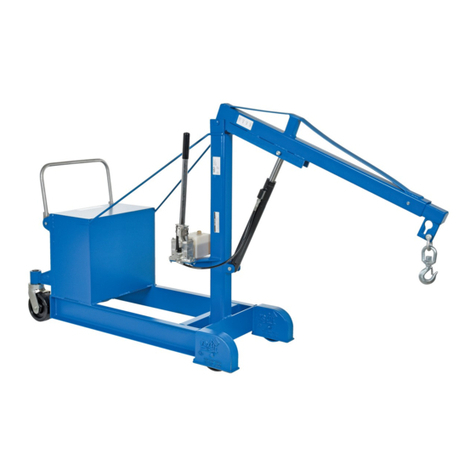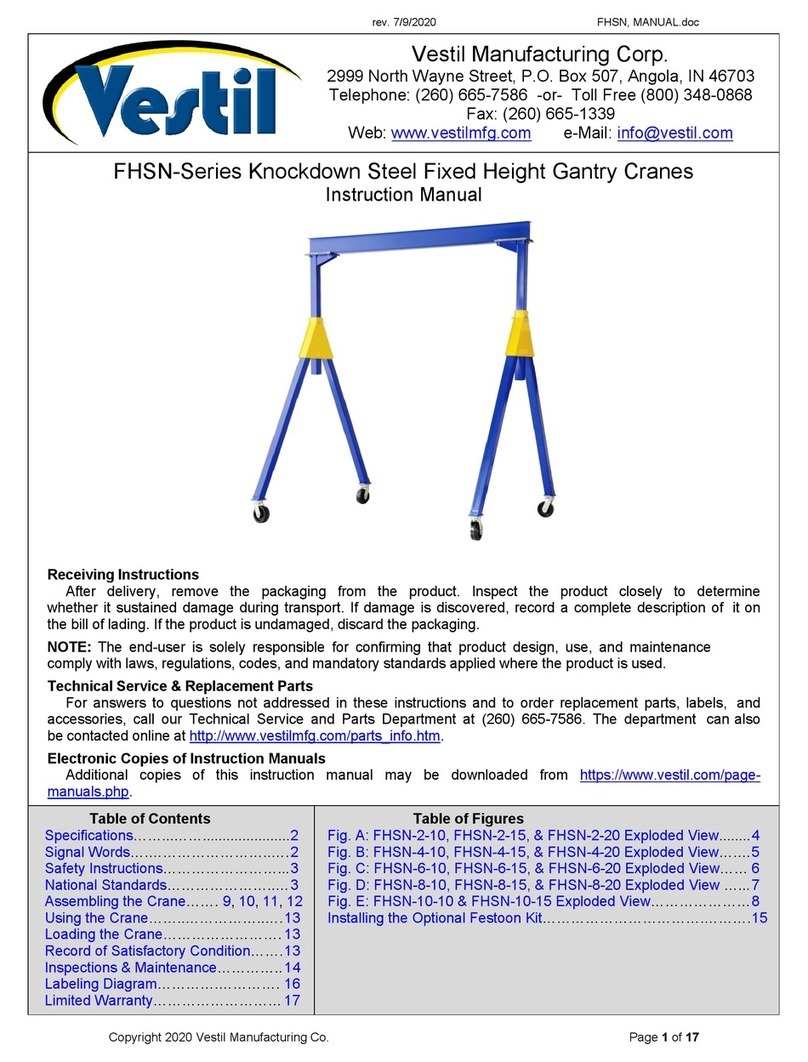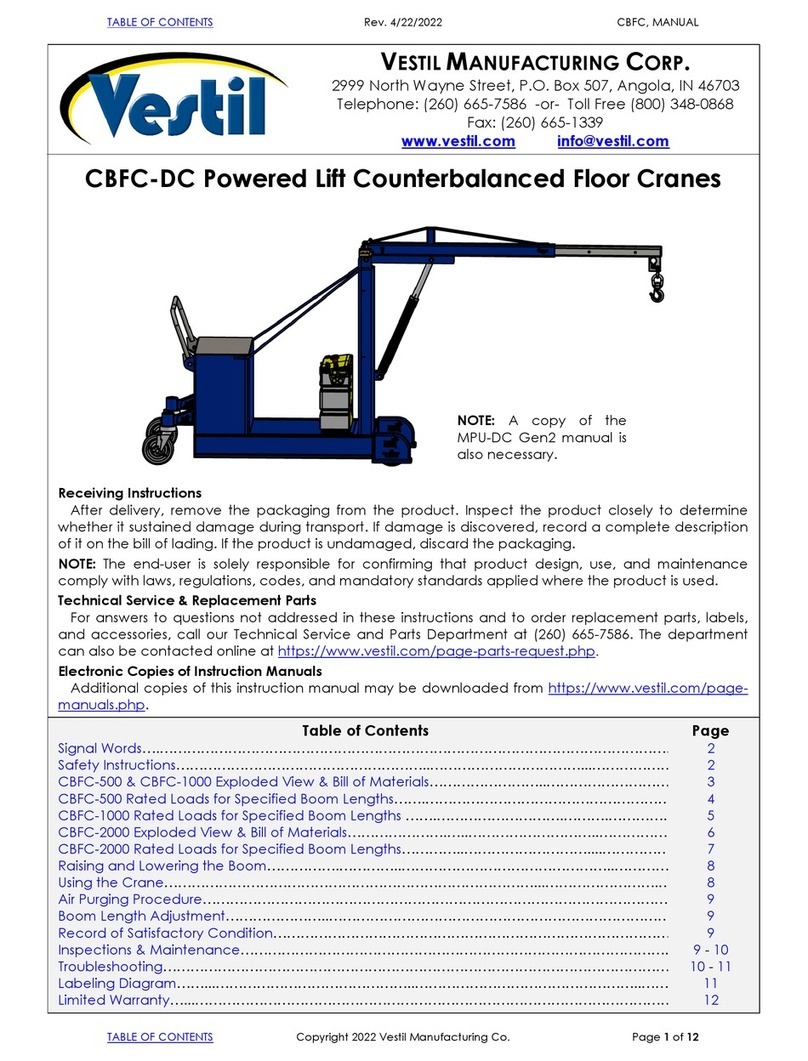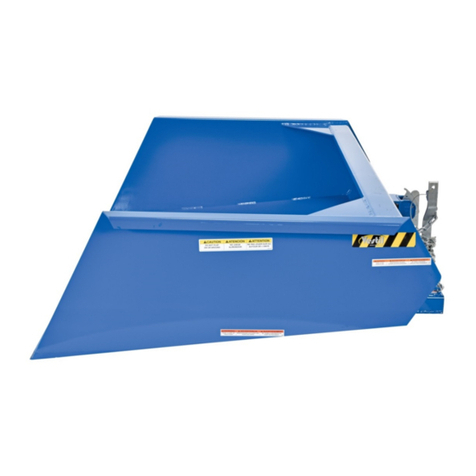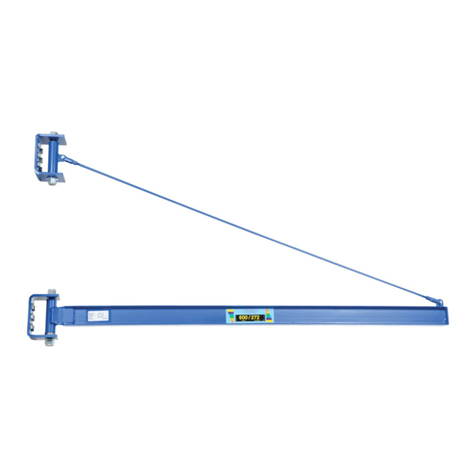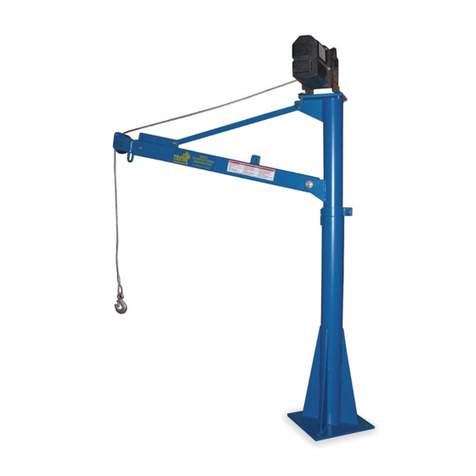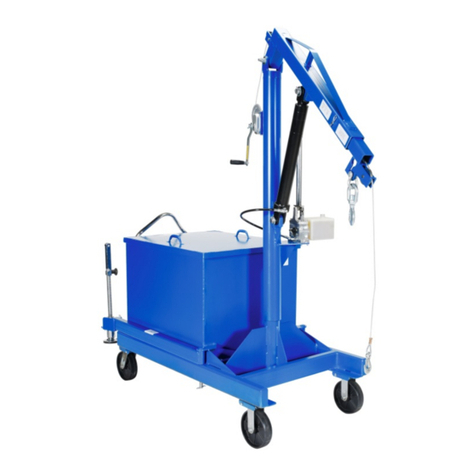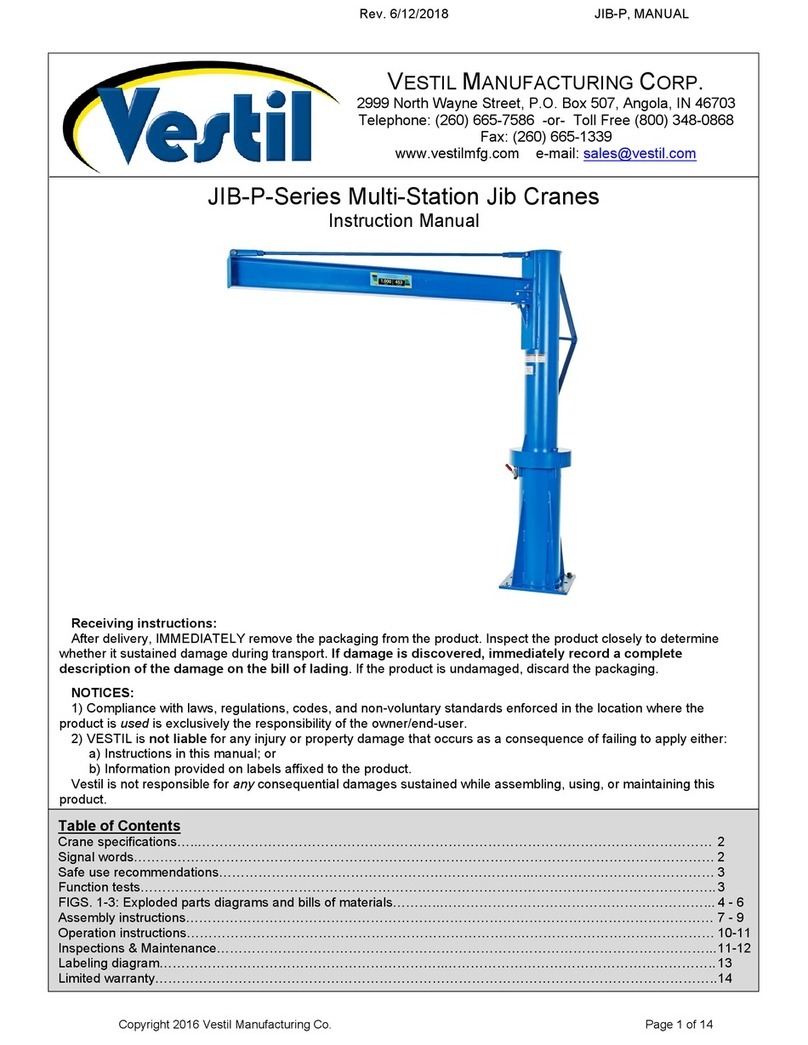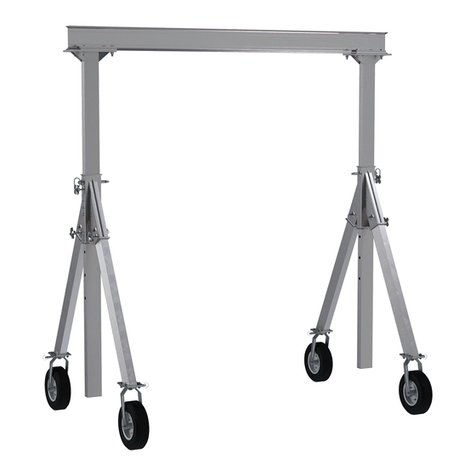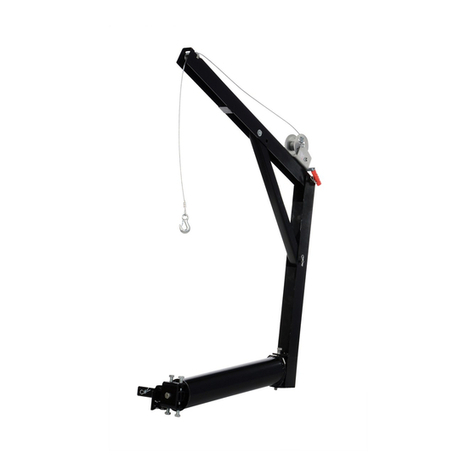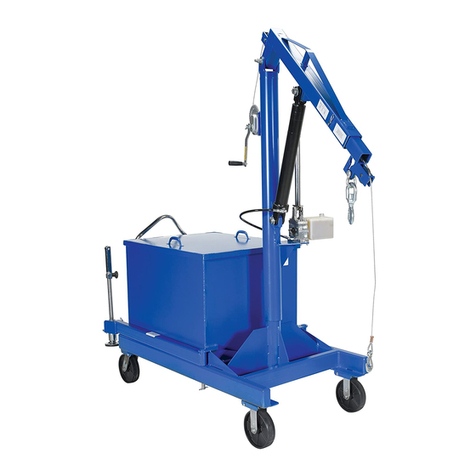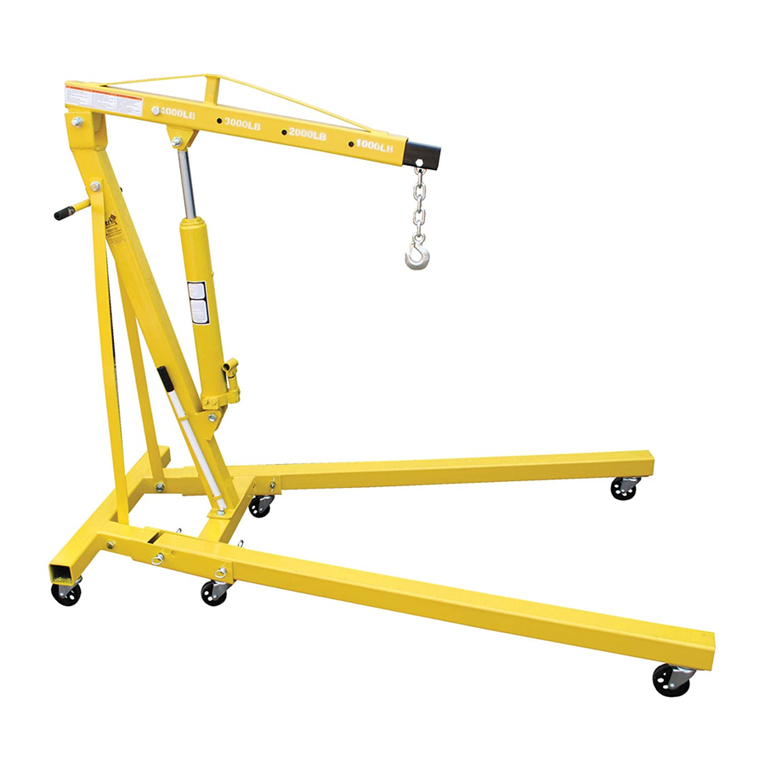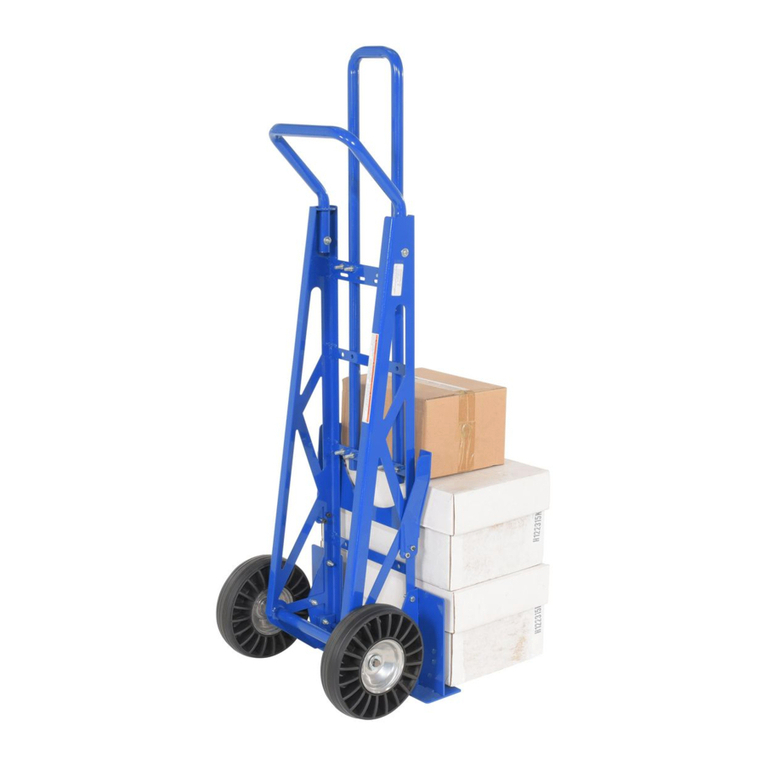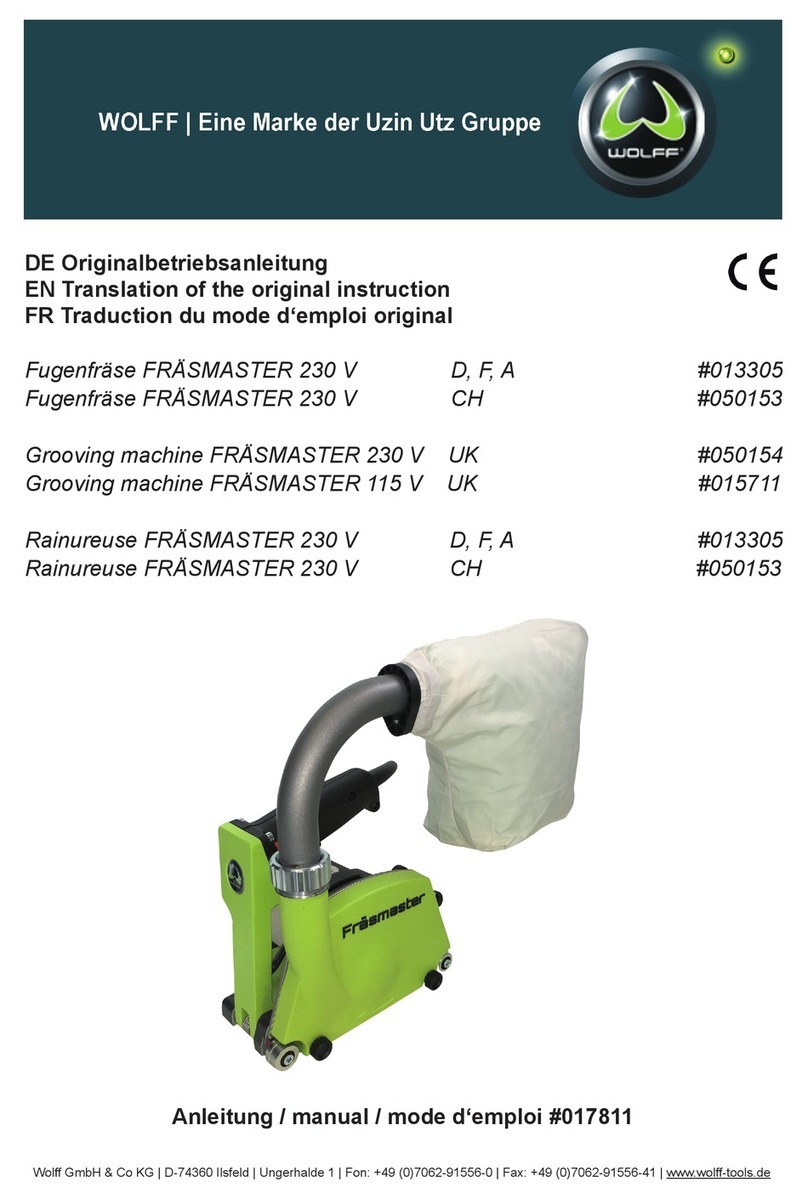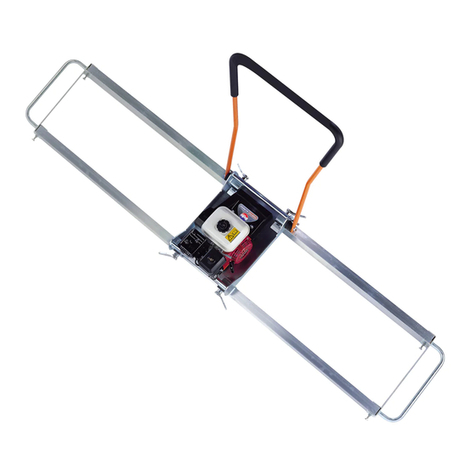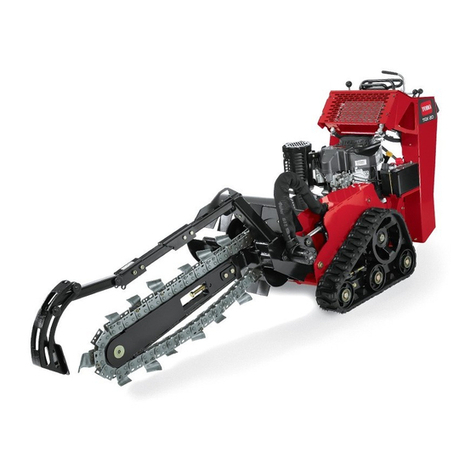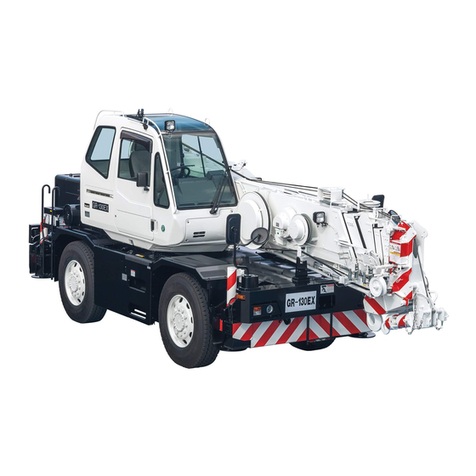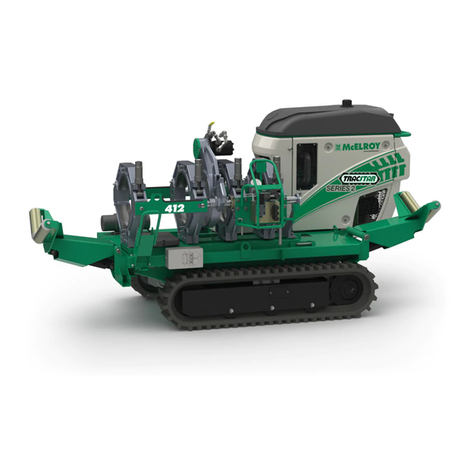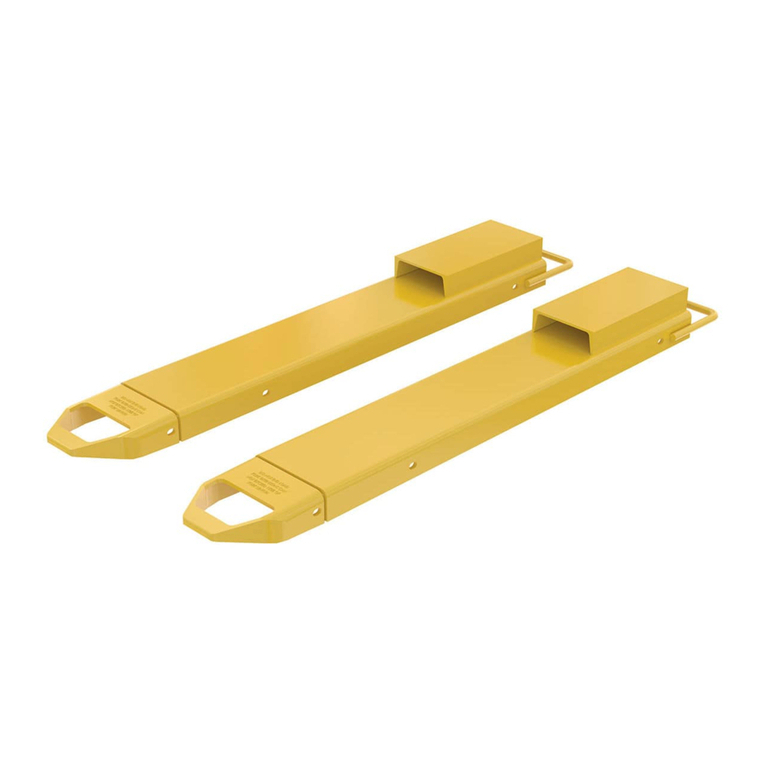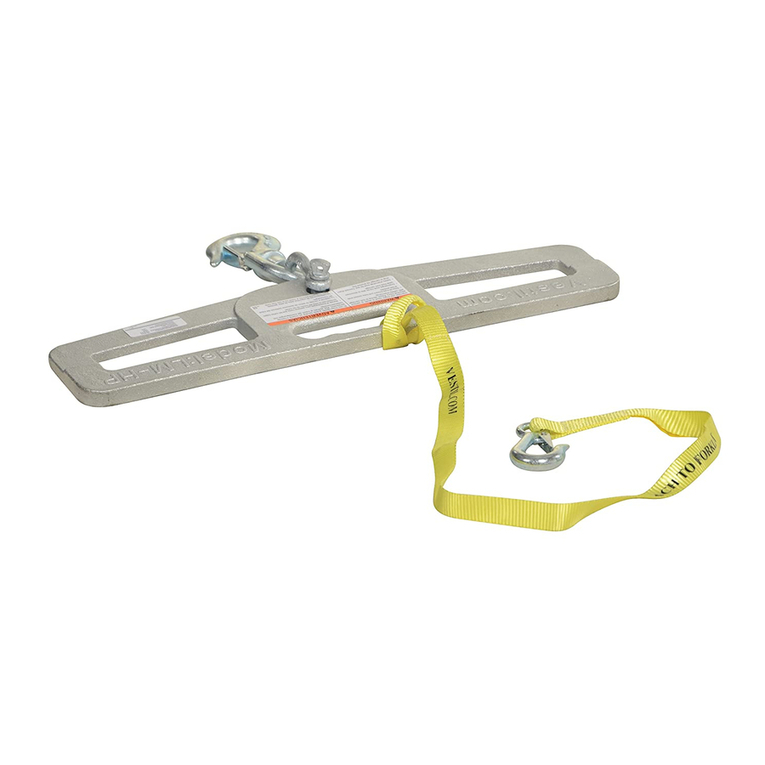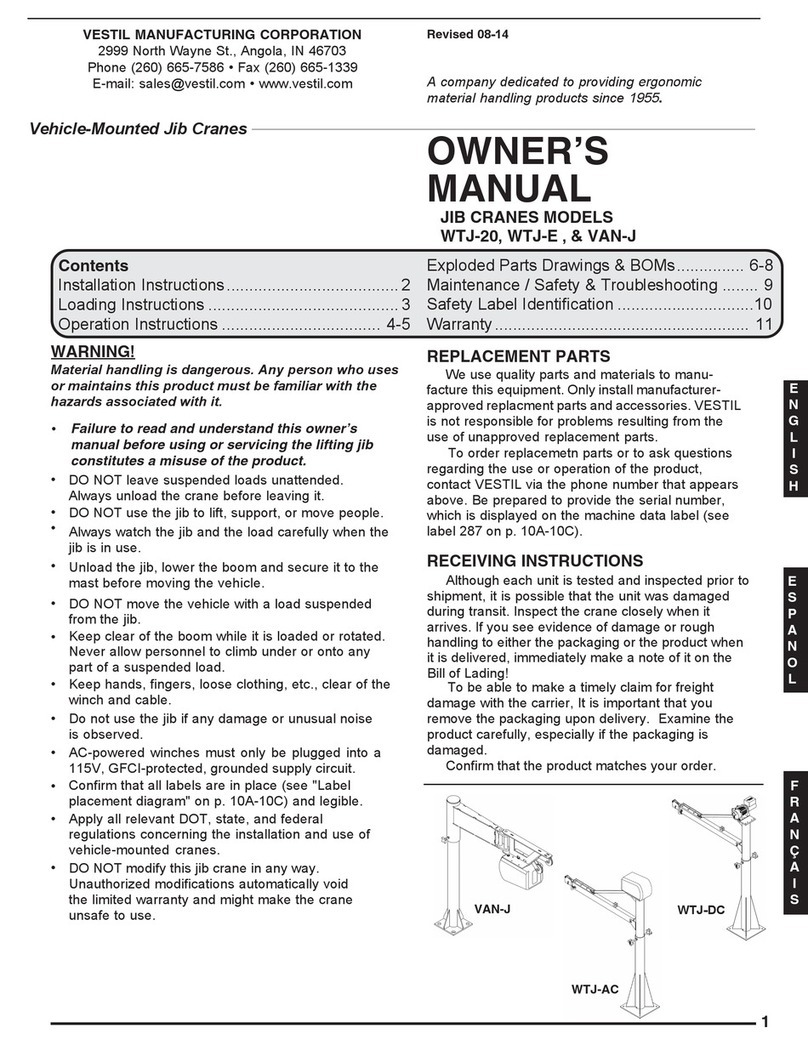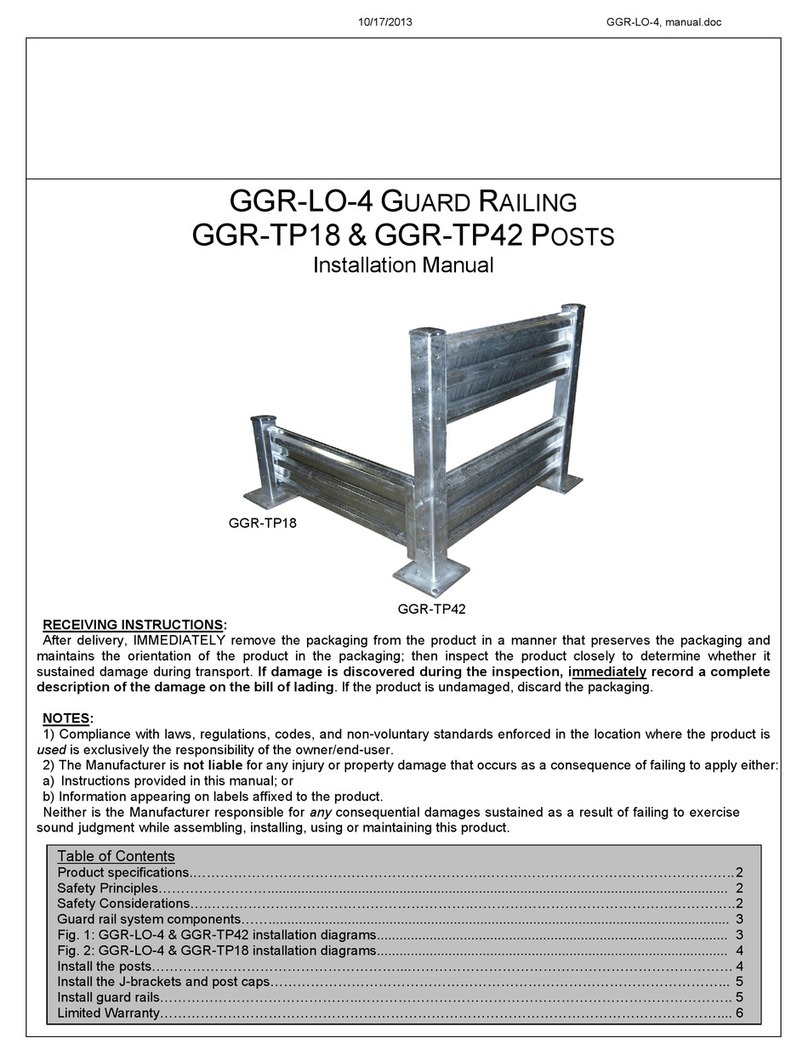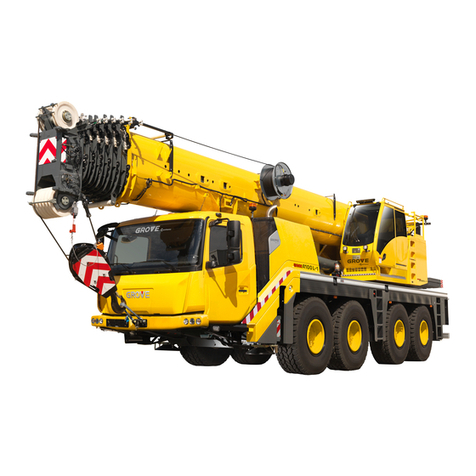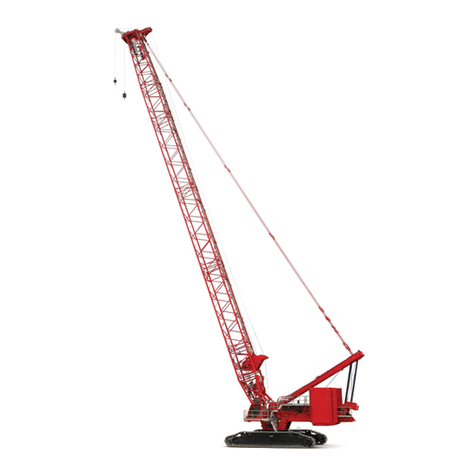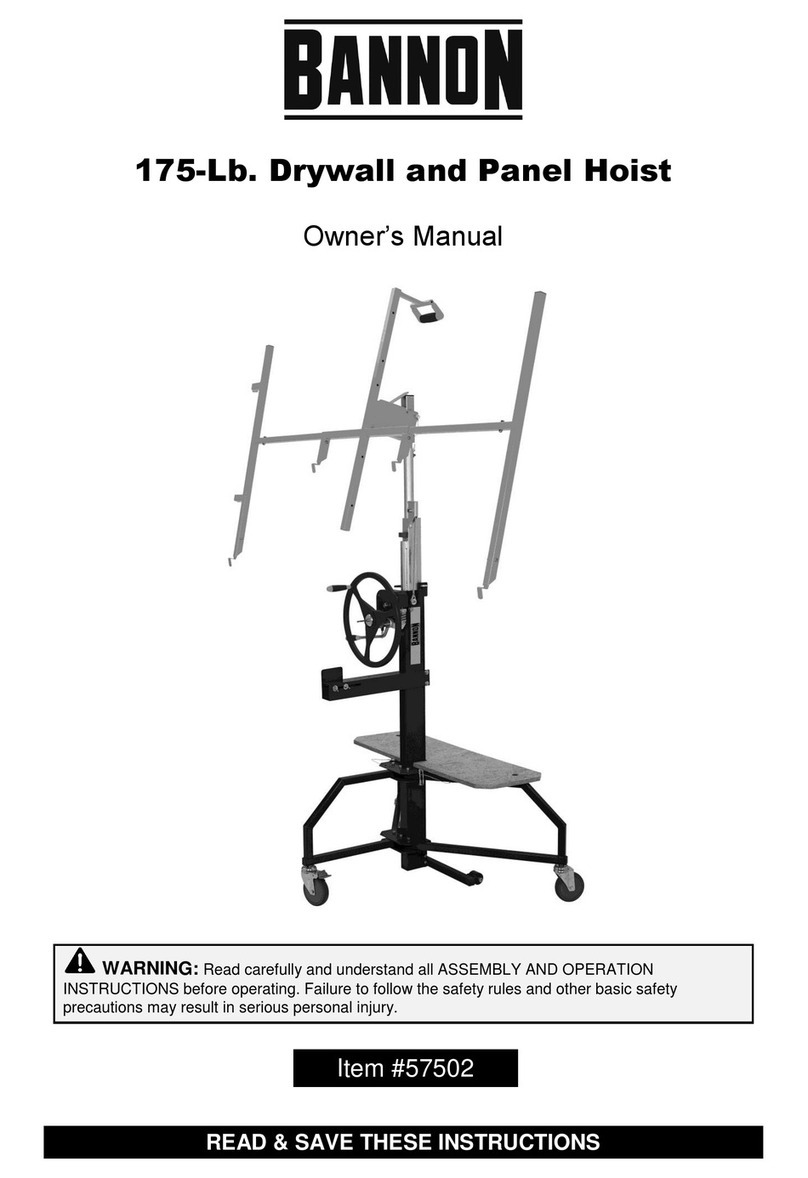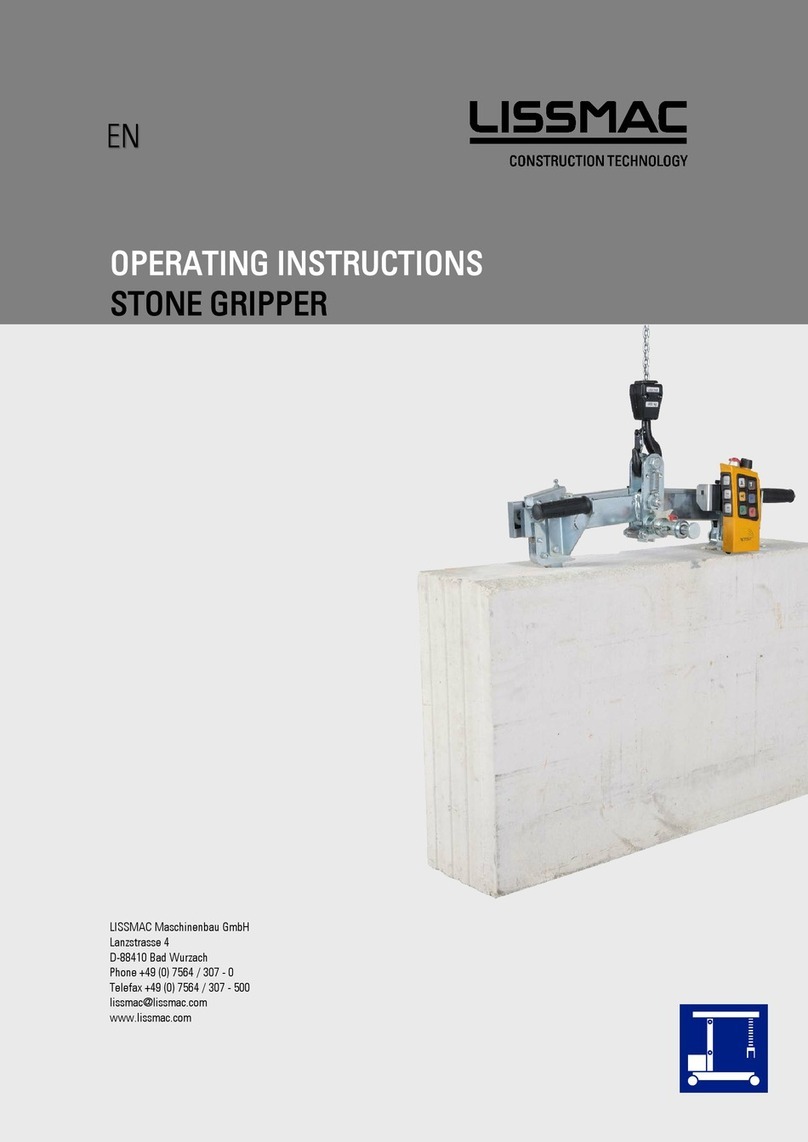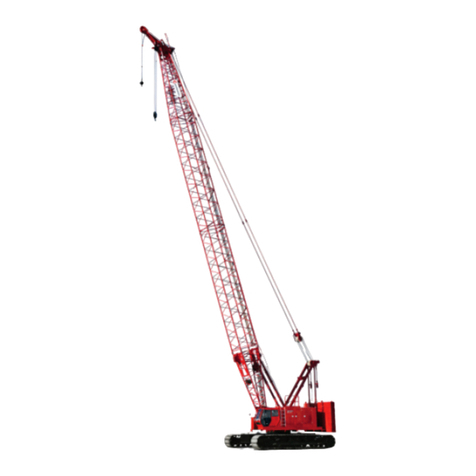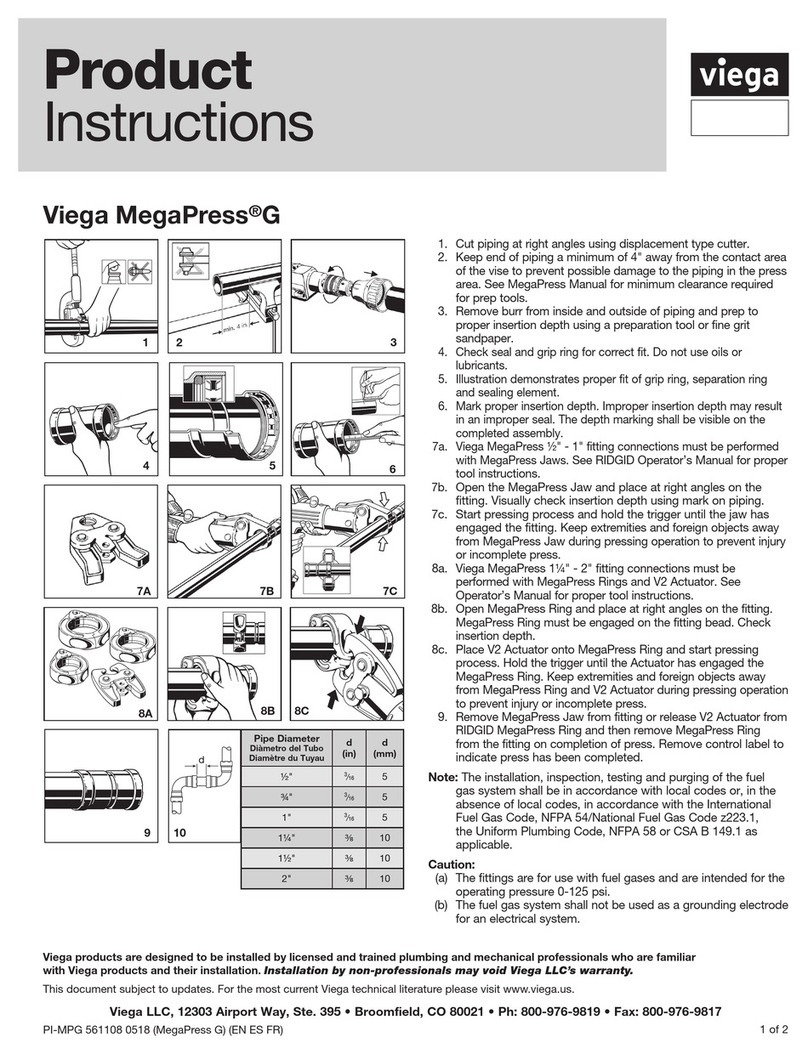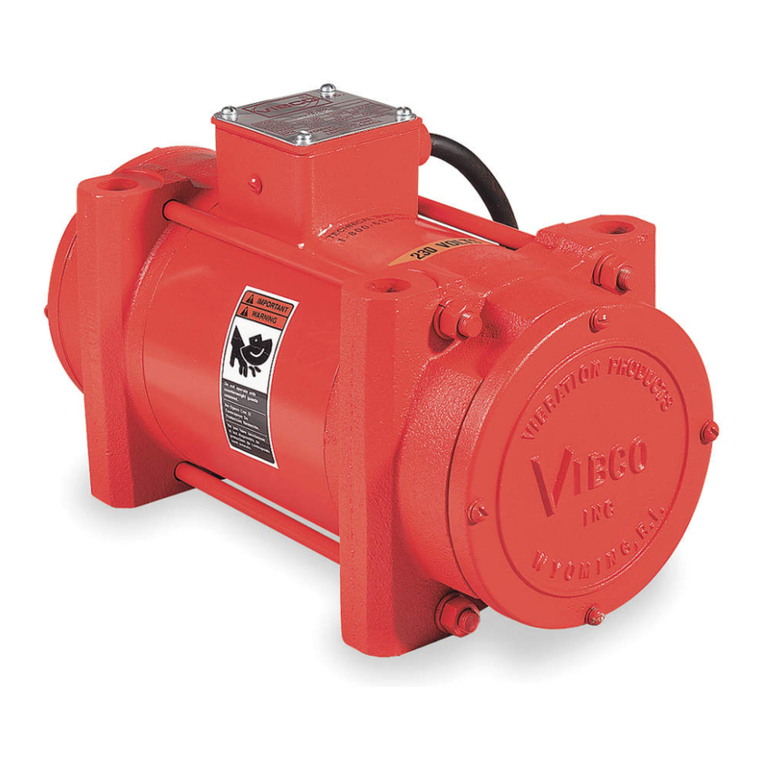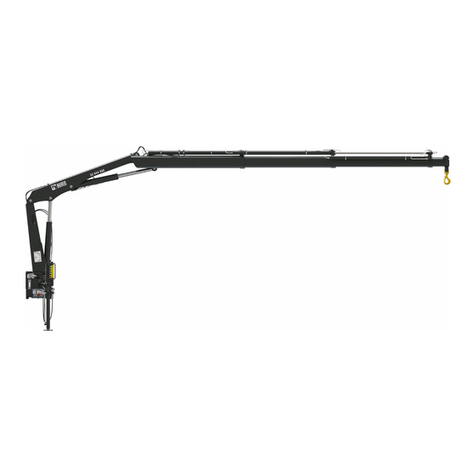
TABLE OF CONTENTS Rev. 5/12/2021 WTJ-2, MANUAL
TABLE OF CONTENTS Copyright 2021 Vestil Manufacturing Corp. Page 10 of 12
5. Attach the load rigging to the selected hook.
a. Fixed hook OR lifting bale: Lower the boom sufficiently to attach it to the load rigging.
b. Winch hook: Turn the winch handle counterclockwise until the hook is low enough to attach the rigging.
6. Tighten the locking bolt tightly against the turntable. Turn the winch handle clockwise to raise the load just above
the vehicle bed/floor.
7. Loosen the locking bolt. Rotate the boom slowly and direct the load to the desired location. Lower the load until it is
entirely supported by the vehicle.
8. Put the crane into transport configuration--short boom with boom fully lowered.
a. Pin the booms together at point A (short configuration).
b. Use the pump handle to turn the relief valve counterclockwise. Lower the boom completely to relieve
hydraulic pressure.
RECORD OF SATISFACTORY CONDITION
After assembling the unit and before using it for the first time, make a written record that describes the appearance
and operation of each part. Pay particular attention to junctions (areas where sections bolt together) and pivot points.
Turn the winch handle to raise and lower the winch hook. Record your observations about how the unit looks and
sounds as the hook rises and lowers. Measure the throat opening of both hooks and record the measurements. Use
the pump to raise and lower the boom. Describe how the cylinder extends and retracts, the sound of the pump as it
operates, and the force required to move the handle back-and-forth. Collect all photos and writings in a file. This file is
a record of the crane in satisfactory condition. During future inspections, compare your observations with the recorded
information to determine whether a component is in normal condition or requires repair or replacement.
INSPECTIONS
Inspect and maintain the unit as described (below). If problems are discovered during an inspection, restore the
unit to satisfactory condition before returning it to service.If the unit cannot be restored to satisfactory condition,
permanently remove the crane from service.
The unit must be tested at 125% of its rated capacity anytime the crane is repaired. Put the boom in short
configuration (see pages 2 and 3or 5) and lift a 1,250 lb. test load with the lifting bale using appropriate rigging.
At least once per month inspect:
1. Winch and pulleys: raise and lower the winch hook. Confirm that the cable smoothly winds off of and onto the
winch spool. The winch should lock automatically whenever the handle is not rotating. This automatic locking
feature prevents the hook from lowering on its own. The large and small pulleys should not be loose or severely
worn and should rotate freely as the cable passes over them.
2. Winch cable: check for reeving, fraying, thinning, bird-caging, and elongating regions. If the cable is damaged,
replace it.
3. Frame elements and hardware:
a. Frame elements: examine the mast receiver, turntable, mast, boom, and telescoping boom for damage,
deformation, corrosion, cracked welds, and severe wear. Inspect pivot points for severe wear. All frame
members should be square, rigid, and free of significant rusting and corrosion. Remove rust with steel wool
or a metal bristle brush and apply touchup paint to the affected areas.
b. Fasteners: inspect all bolts, pins, washers, nuts, etc. Tighten loose connections.
4. Mast bearing: Rotate the boom in both directions. Make sure that it rotates smoothly. Listen for unusual noises. If
the crane wobbles or is unusually noisy as it rotates, remove the mast and grease the bearing at the bottom. If
lubrication does not resolve the problem, the bearing might need to be replaced. Contact the factory to discuss
the problem.
5. Hooks and bale: Visually inspect both hooks and the bale. Look for deformations and cracks. Immediately
discard a hook if it is cracked or if the throat opening is more than 15% in excess of the original throat opening.
Discard a hook if it is twisted more than 10° from the plane of the hook. Confirm normal operation and operation
of the safety latch of both hooks.
6. Vehicle: inspect the vehicle where the crane is mounted. Closely examine the area around the mounting plate.
Look for rust, corrosion, and metal fatigue. Check the mounting plate (base of the mast), the anchoring
hardware, and the vehicle bed/floor, particularly around the anchor bolts. Make sure that the receiver is securely
anchored (i.e. does not wobble). Confirm that anchoring hardware is in normal condition.
7. Labels: confirm that all labels are in good condition and in place as shown in the LABELING DIAGRAM on p. 11.
Every 6 months:
Conduct a load test. Lift a test weight with the lifting bale equal to 125% of the capacity. After the test, examine
the crane and the vehicle bed where the crane is mounted. Look for deformations, cracks, and metal fatigue. Do
not continue to use the crane unless both it and the supporting vehicle (or surface) are in satisfactory condition.












